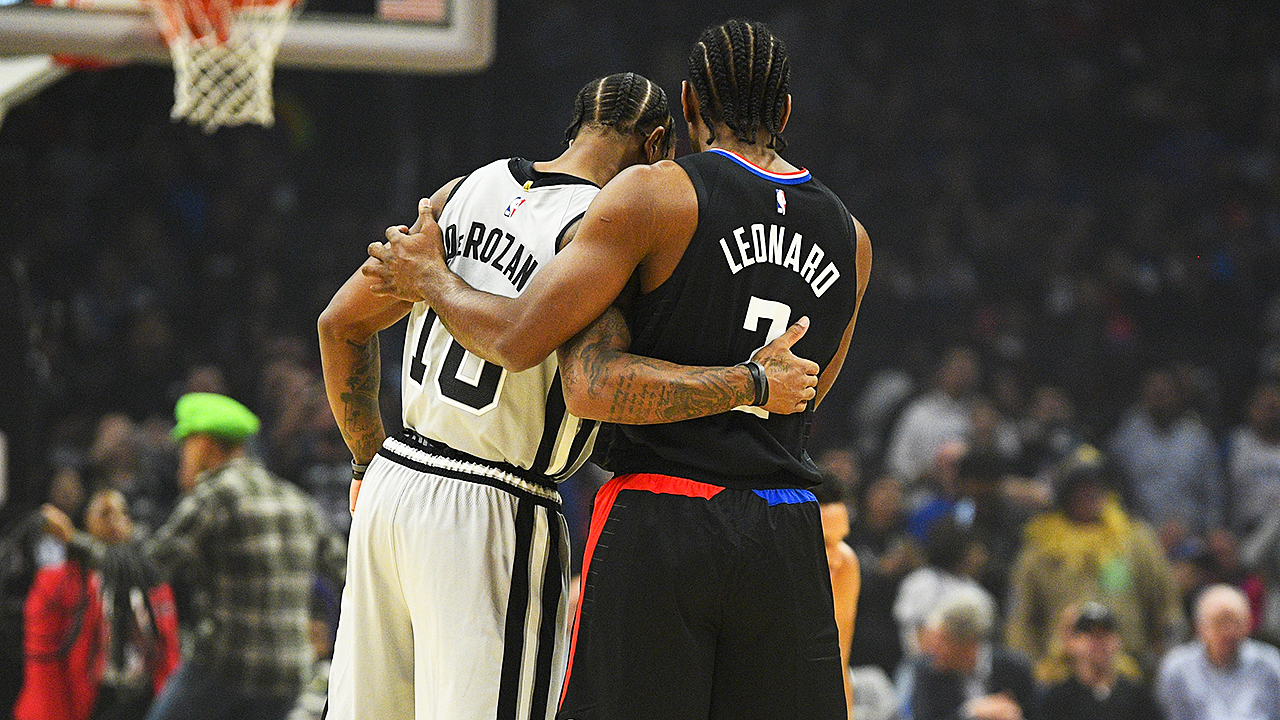Thursday night, the San Antonio Spurs and Los Angeles Clippers squared off in what resembled a Toronto Raptors alumni game.
There was Rudy Gay scoring an inefficient nine points on 3-of-12 shooting from the floor; there was Jakob Poeltl, who chipped in five points and three rebounds — numbers right in line with his season averages; there was Patrick Patterson, who missed all five shots he took but collected nine boards; there was Lou Williams, who continued his early campaigning for another Sixth Man of the Year award by being a facilitator off the bench to the tune of 12 points and five assists.
And of course, there was Kawhi Leonard and DeMar DeRozan.
The battle between reigning Finals MVP and the man he was traded for was illuminating. DeRozan scored a season-high 29 points in familiar fashion — without attempting a three pointer. That wasn’t enough to best Leonard, though, who responded with a season-best 38 points, as well as 12 rebounds and four steals. In the end, the Clippers won 103-97 because Leonard refused to lose.
By volume, this game featured more ex-Raptors than any this season and was a testament to that list of departed players being more star-studded than it’s ever been.
While the season is young and the sample sizes are small, there are notable trends already emerging in not just the performances of DeRozan and Leonard, but those of other ex-Raptors as well.
[snippet id=4725691]
 Kawhi Leonard
Kawhi Leonard
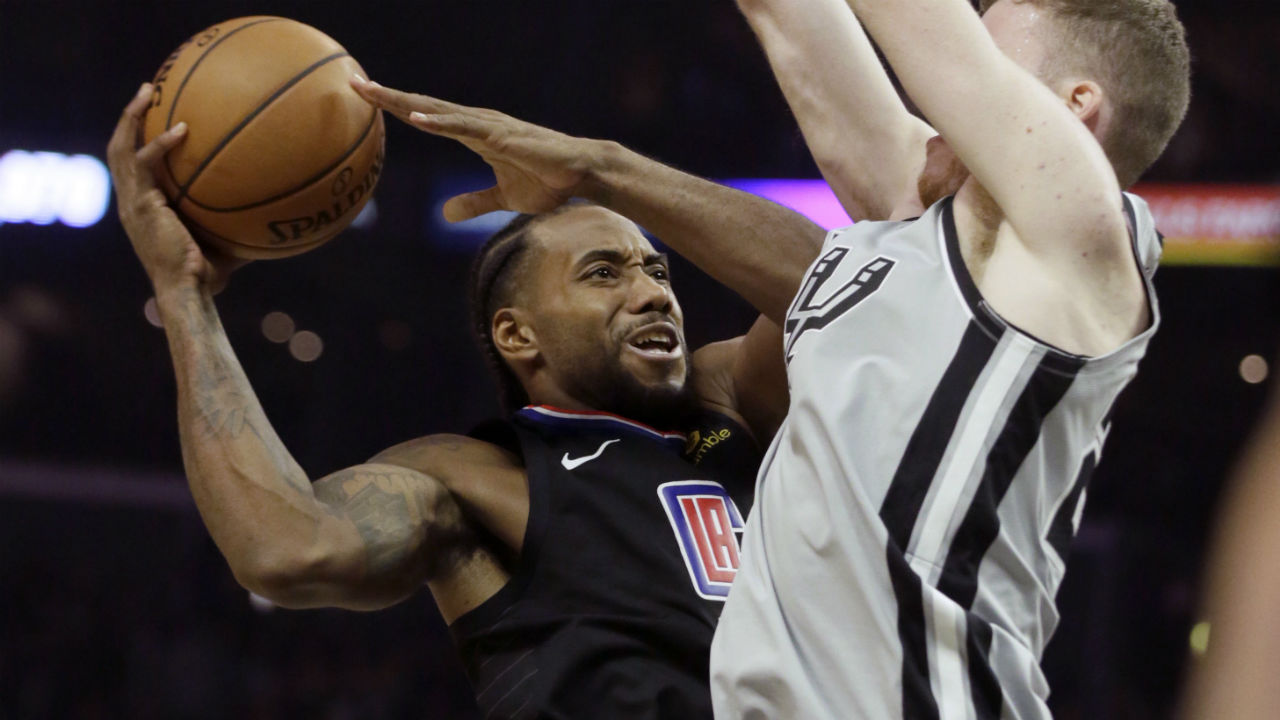
If one were to nitpick Leonard, it would be that for all his singular greatness as a defender and a scorer, he lagged behind as a playmaker relative to other all-world level talents. Over the first eight seasons of his career, Leonard never averaged more than 3.5 assists per game, nor did he register an assist percentage better than 19.
Those eight seasons prior to this one now look like they belong to a different player.
Through his first five games in L.A., Leonard is not only passing more than he ever has — 34.6 per game — but they’re resulting in points more often.
Appearing in a load-managed 29.2 minutes per night, Leonard has picked up 6.2 assists per game and has assisted on 41.7 per cent of his teammates’ made shots while he’s on the court — last season, for reference, Russell Westbrook led the NBA at 46.5 per cent. All of which has added up to him creating a career-best 15 points per game off of his assists for the Clippers, nearly double what he’s done any other campaign.
There are caveats, of course. It’s only been five games, the Clippers’ competition has been sub-par defensively and there’s no Paul George to siphon possessions away from him yet.
But even if the counting stats do take a dip once the sample size grows and George returns, that Leonard can orchestrate an offence the way he has puts him in new airspace — one that makes him the NBA’s best, most complete player.
[snippet id=3360195]
 DeMar DeRozan
DeMar DeRozan
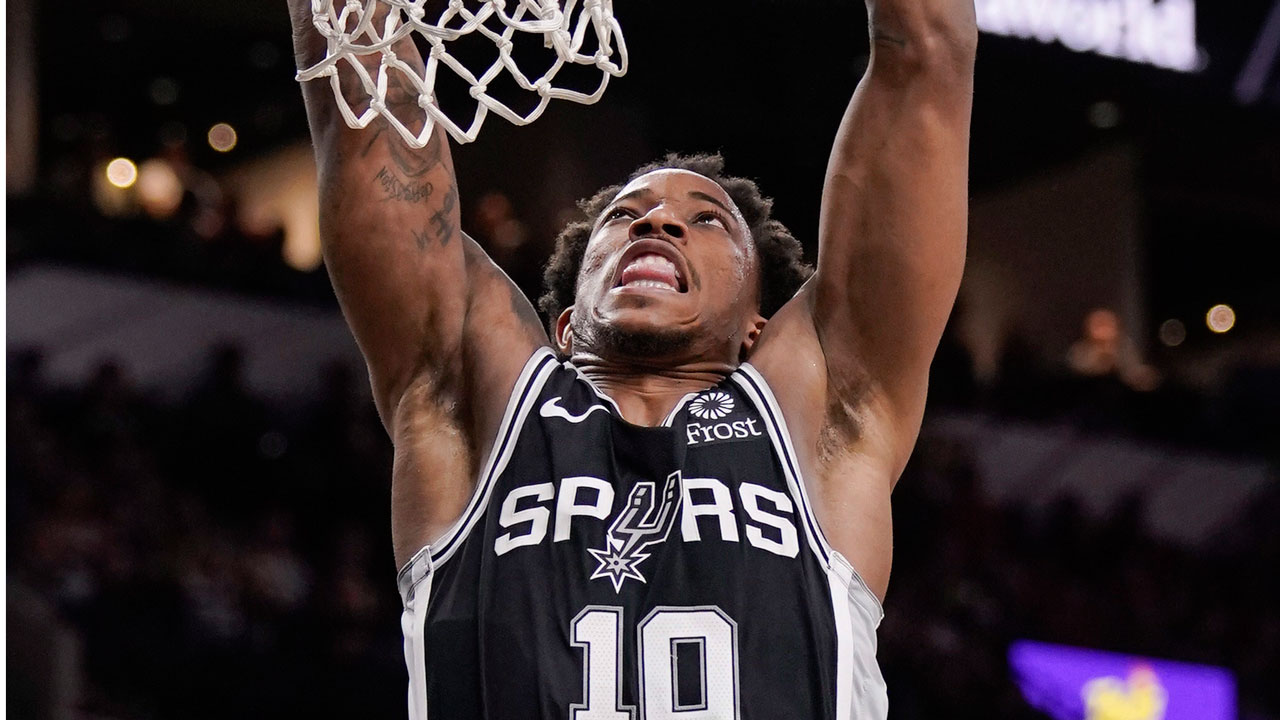
DeRozan’s career is inextricably linked to Leonard. He was, after all, the marquee name that had to be sent to San Antonio to bring Leonard north. Fitting then that Leonard’s progress offers a contrast to DeRozan’s regression.
In four games for the Spurs this season, DeRozan has largely disappeared as a primary playmaker — averaging 26.3 passes per game and 2.3 assists, down from 35.2 and 6.2 last season — and has apparently given up on pretending he may, eventually, extend his range to beyond the arc having attempted, and missed, just one three-pointer.
Part of that may be the return of Dejonte Murray, who leads the team with five assists per game, but ascribing all the blame to that is likely too charitable as DeRozan’s usage rate hasn’t dipped at all — meaning he isn’t getting less opportunities to facilitate, he’s just facilitating less successfully.
That’s especially apparent on his drives to the rim, where DeRozan is averaging 20 drives per game — second-most in the NBA — and is passing out of them 38.8 per cent of the time, resulting in just 0.5 assists.
Not only is the passing percentage a drop off from last season’s 45.1 per cent, but the assist drop off — 2.3 last year — puts him in line with players like Andrew Wiggins, not quite company you want to keep if championships are the endgame.
With that said, the rest of the scoring stats are a small uptick from last season as he’s averaging 23.8 points on 52.1 per cent shooting. However, at this stage of his career it’s becoming clear DeRozan is who he was, and who he will likely always be: Endearing, exciting and, ultimately, not quite enough.
[snippet id=4740307]
 Danny Green
Danny Green
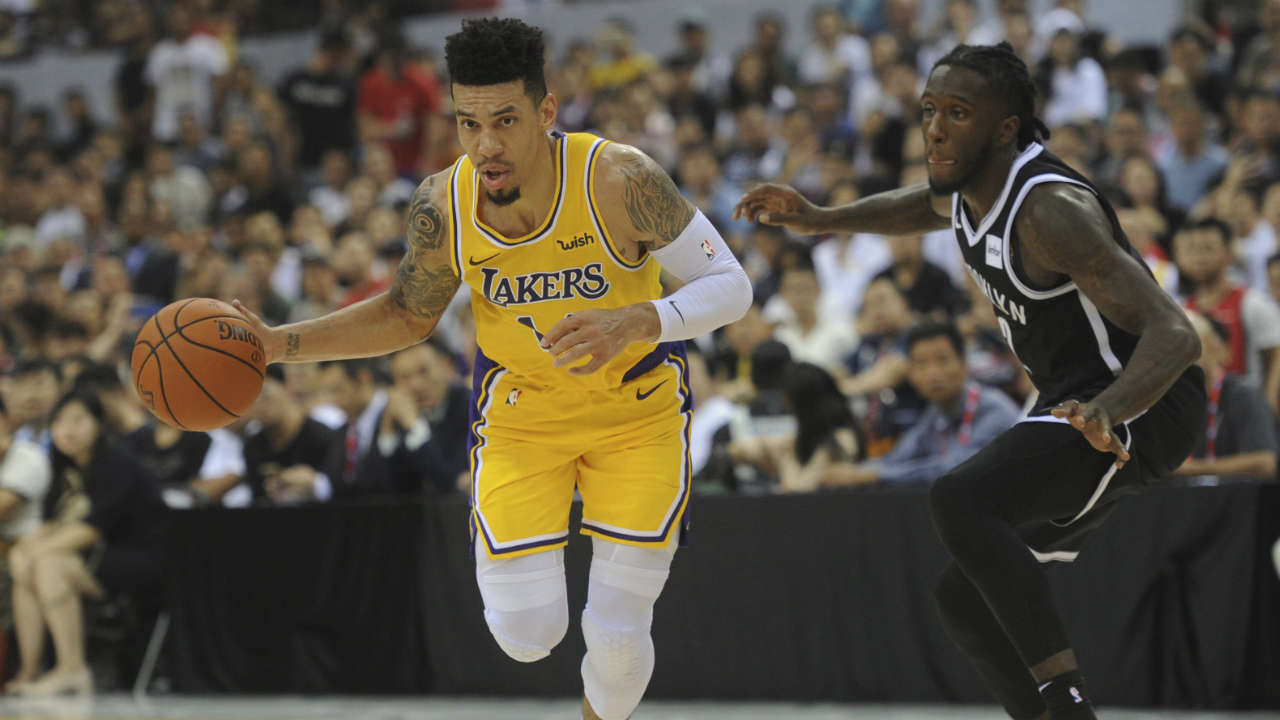
The Danny Green Experience is an inconsistent one, but at the moment he’s making a case to be the Lakers’ clear-cut third-best player.
Through four games, the Lakers are making 9.8 threes per game on 29 attempts with Green making three per on six attempts alone.
Which is to say that so far Green is not only connecting on an absurd 50 per cent of his long-range attempts — good for the 94th percentile among wing players, according to Cleaning the Glass — but he also accounts for a little under 31 per cent of the Lakers’ total made three-pointers on any night.
Even with Green’s lights-out shooting though, the Lakers still manage to shoot worse overall from long-range with him on the floor than when he sits — best interpreted as an indictment of the Avery Bradley (30 per cent from distance), LeBron James (29.4 per cent), Anthony Davis (27.3 per cent), JaVale McGee (0 per cent) lineup Green has spent most of his minutes with.
Those numbers are, in a word, bad. With how dominant — and important — the James-Davis pick-and-roll has been for the Lakers’ offence, Green’s spacing figures to be essential to keeping their machine moving forward.
 Jonas Valanciunas
Jonas Valanciunas
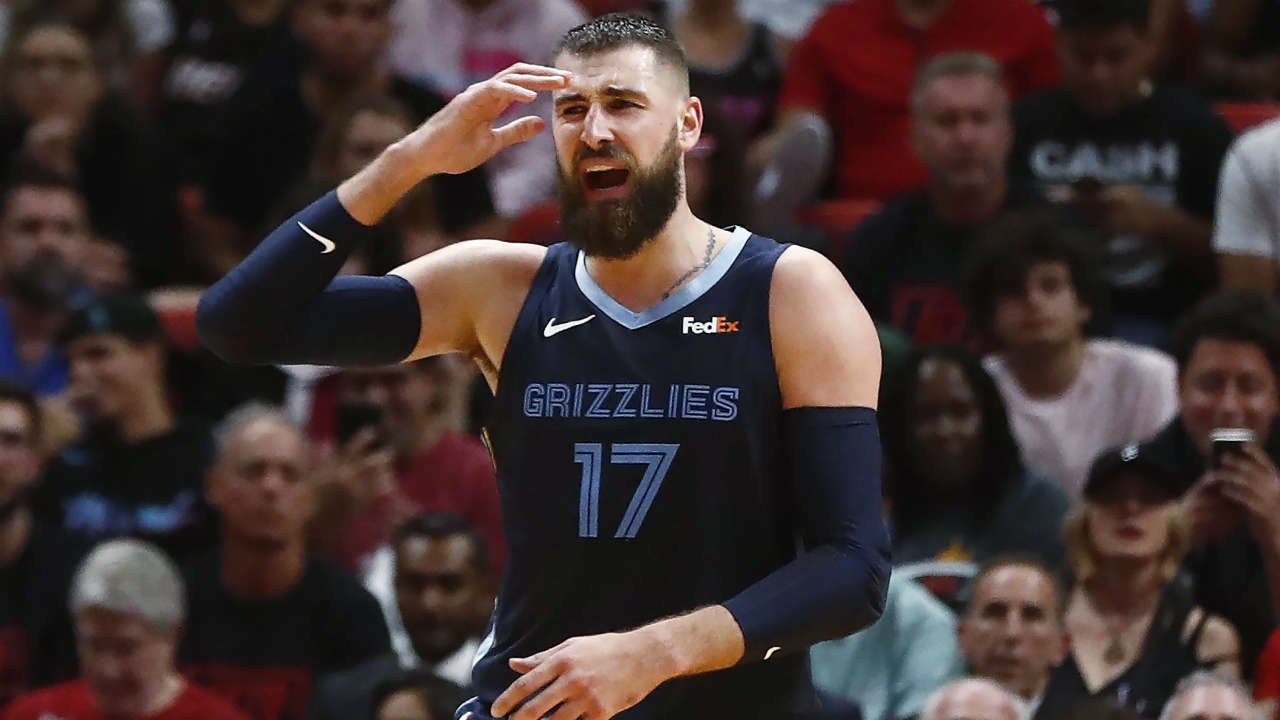
Valanciunas’ usage rate has fallen almost five per cent from where it was during his post-Toronto Memphis Grizzlies games last season, and his non-garbage time minutes have dipped from 27.7 to just 19.3, all of which has translated into his worst box score stats since his sophomore season.
In part, this drop may be because of the arrival of star rookie Ja Morant, who is naturally, and rightfully, consuming a large number of possessions — sitting at a 30.7 per cent usage rate thus far — but it’s also just Valanciunas shooting worse from everywhere, except the free-throw line where he’s nailing a career-best 90 per cent of his freebies.
As he and Morant develop more cohesion those numbers will likely course-correct. Valanciunas is already Morant’s favourite passing target, with 49 sent his way so far.
 Delon Wright
Delon Wright
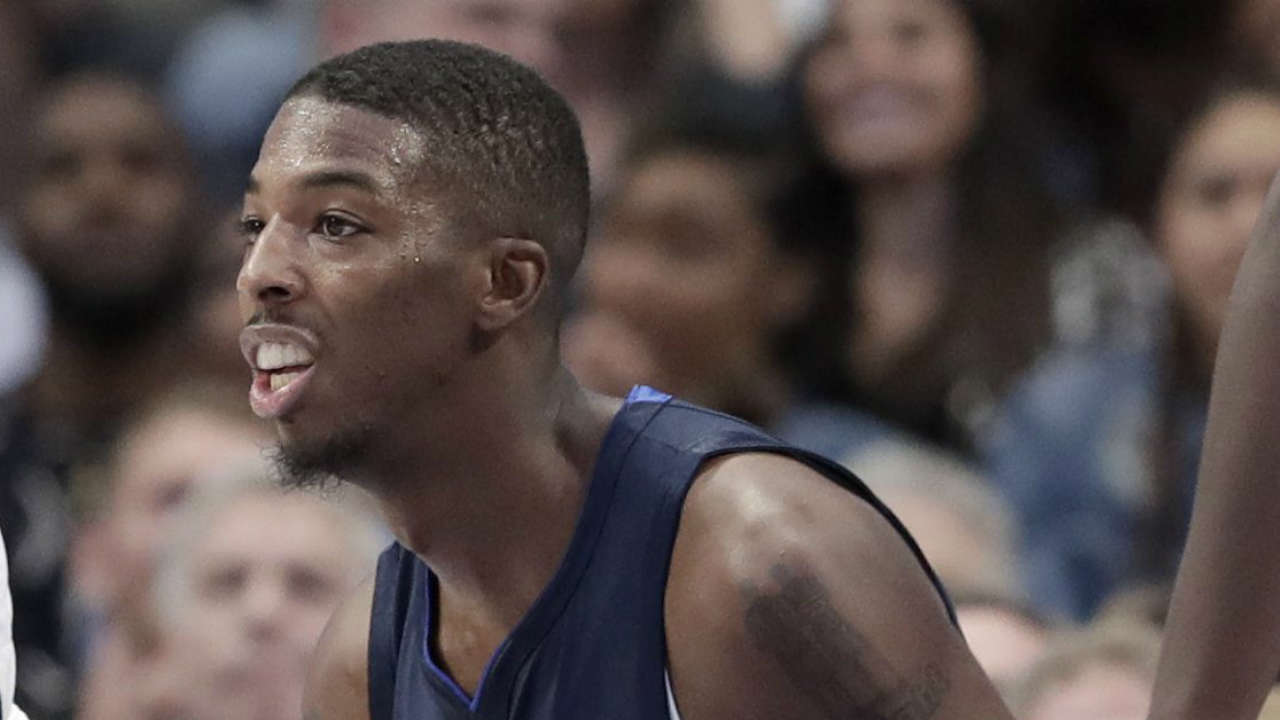
Most of the noise surrounding the Dallas Mavericks revolves around the dynamism of Luka Doncic and Kristaps Porzingis, but it’s the right peripheral pieces like Wright who can make Dallas sustainably interesting.
Wright has blossomed into a perfect combo guard next to Doncic. His usage rate ranks in the bottom 13th percentile but his 1.5 points per shot attempt ranks in the 100th as does his 5.5 per cent turnover rate.
What that means is Wright doesn’t need the ball often and manages to produce consistently without turning it over when he does get it, contributing to Dallas scoring 13.9 more points with him on the floor than off of it.
In four games, he’s averaged just over 11 points on 65.4 per cent shooting from the floor and 60 per cent from long range — albeit on just over one attempt per game.
[relatedlinks]
